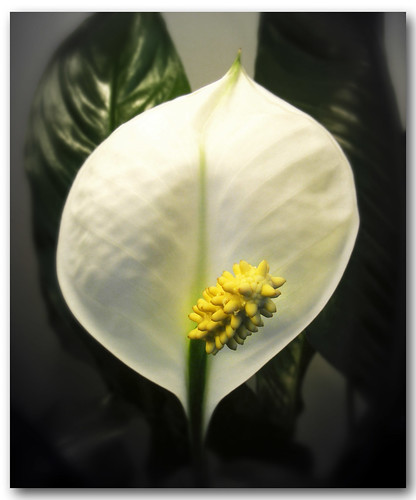TheGardenLady received the following question from Mattie:
About two weeks ago I got a Peace Lily. Everything was going great. But then the leaves started to droop. So my friend has been giving me advice. Today I was pulling the cutting the dead roots and there were milly worms (?) in it. What should I do to prevent this and help save my plant?
Since there are no photos of the “worms” you describe, TheGardenLady thinks that you may have the larvae of fungus gnats in the soil of your Peace Lily. You either brought the plant with the larvae in the soil or your other house plants may have had the fungus gnats in the soil but the infestation may not have been so bad that you many not have noticed them. Fungal gnats can be a major problem with indoor plants and can be difficult to get rid of – but we will try.
You are doing the correct thing in getting rid of the dead or rotting parts of your plant. Since your plant has been taken out of the soil to accomplish this, get rid of the soil completely. Do not compost the soil. Throw the soil in the trash. (Had you not removed the plant from its soil, you should still discard at least the top two or three inches of the soil.) Wash the roots of the plant while it is out of the soil and repot it in sterilized potting soil. You can add some sand to the potting soil. The larvae do not like gritty soil.
You can buy and use a fungicide for fungus gnats – there are many different brands, so follow directions for their use. This Garden Lady does not like to use chemicals indoors and has heard that many of the safer fungicides really do not do a good job in getting rid of fungus gnats; but many sources still suggest using them. So you have to decide whether to go this route or not.
Continue reading “Larvae of Fungus Gnats”




